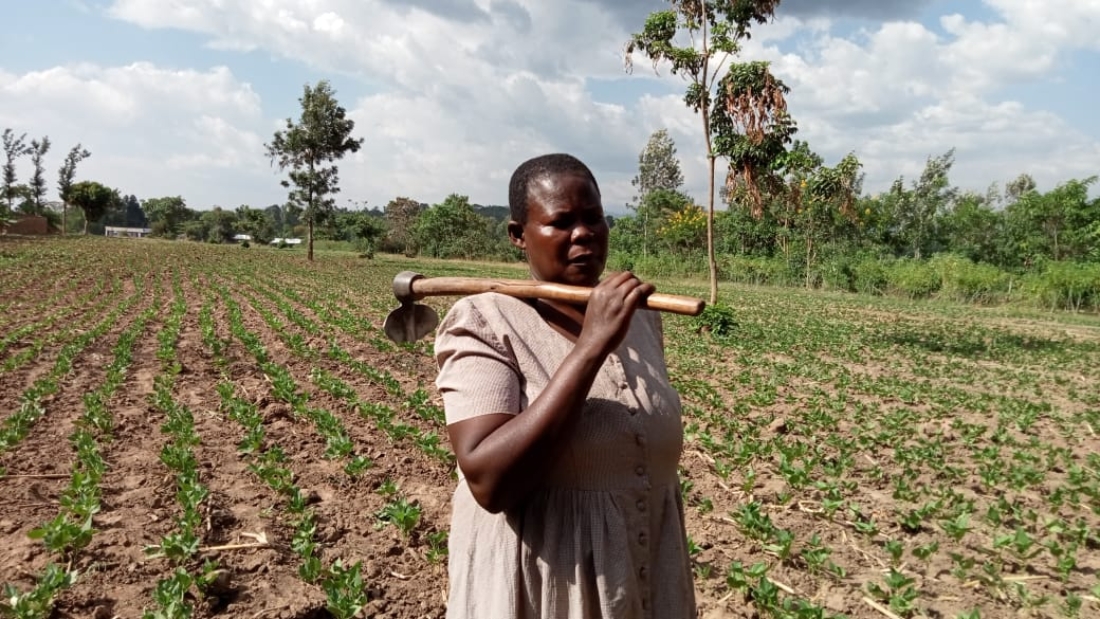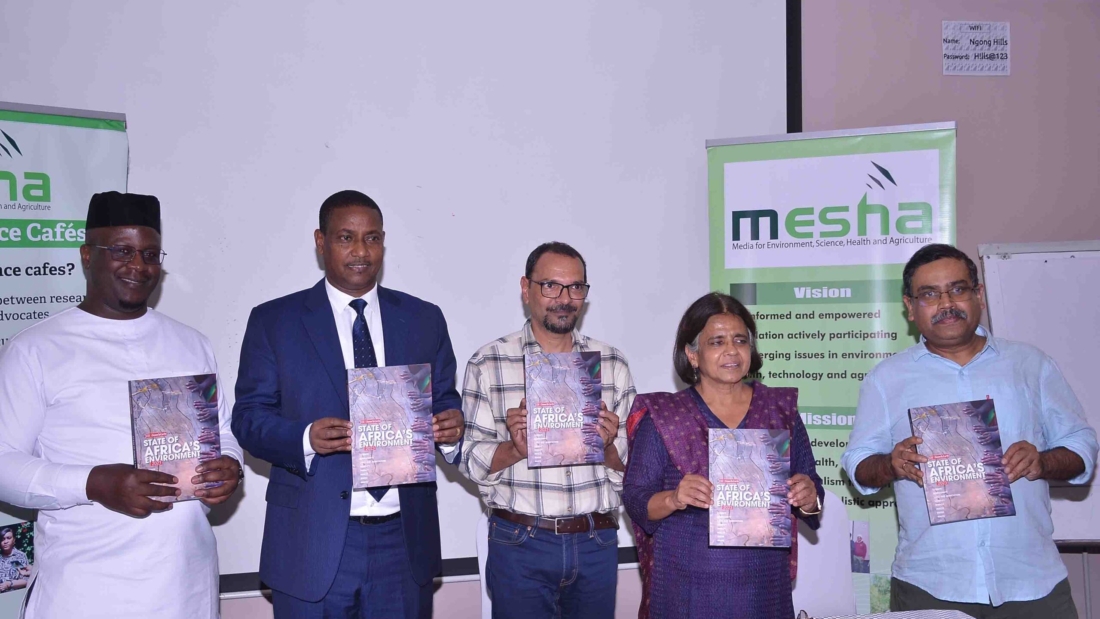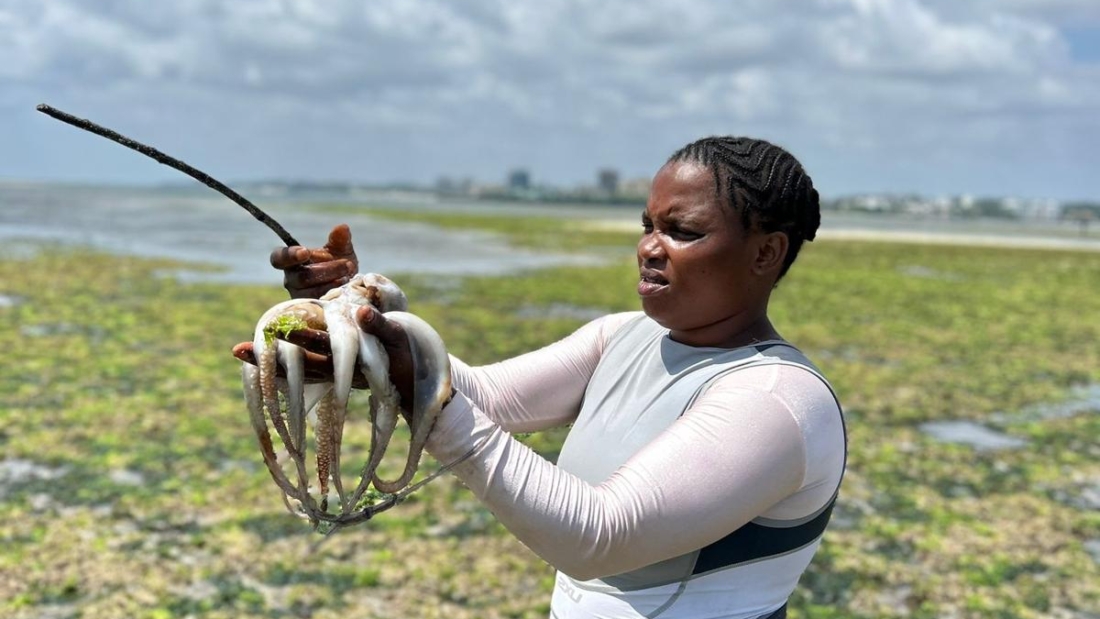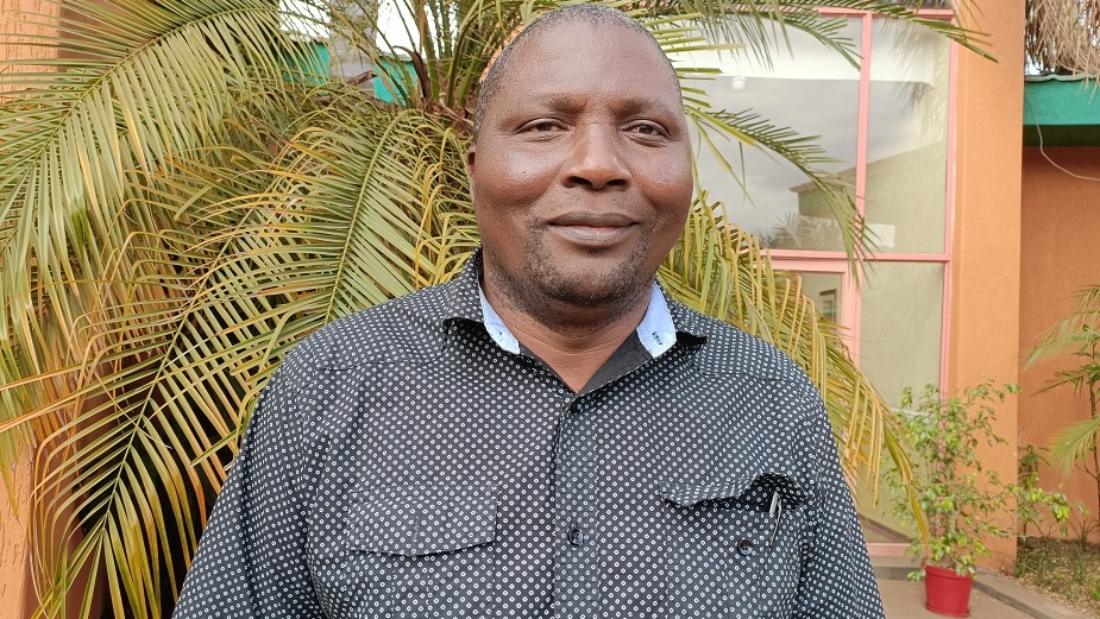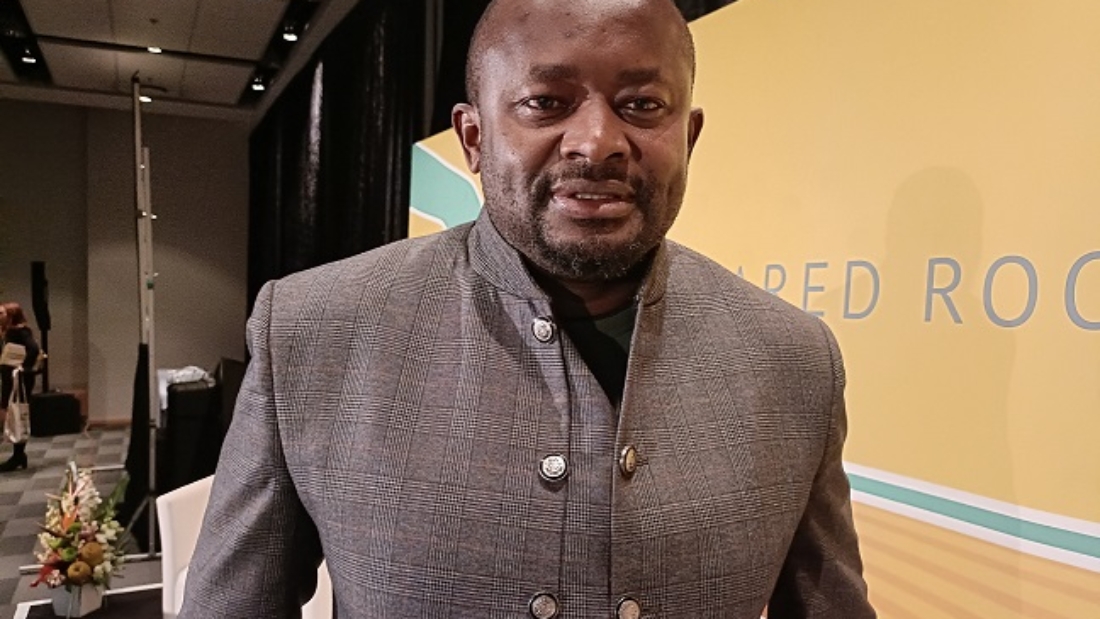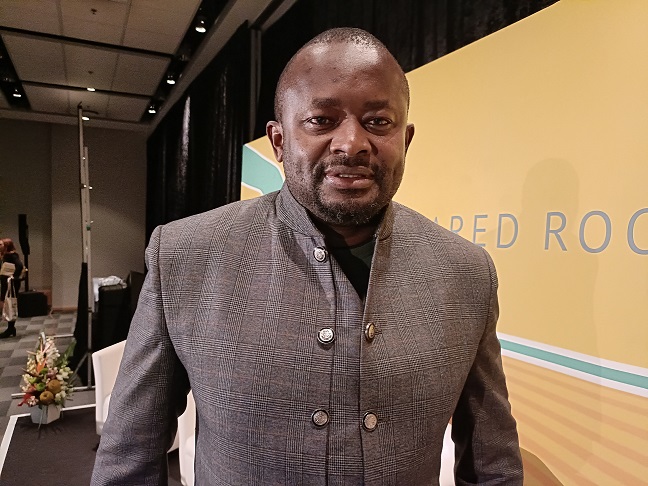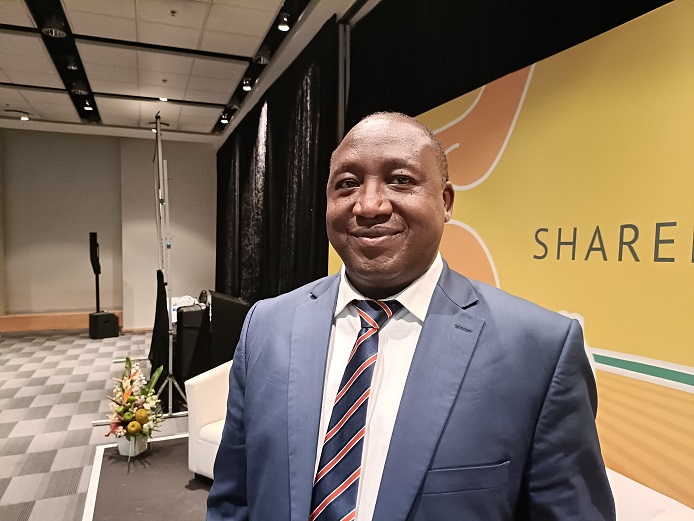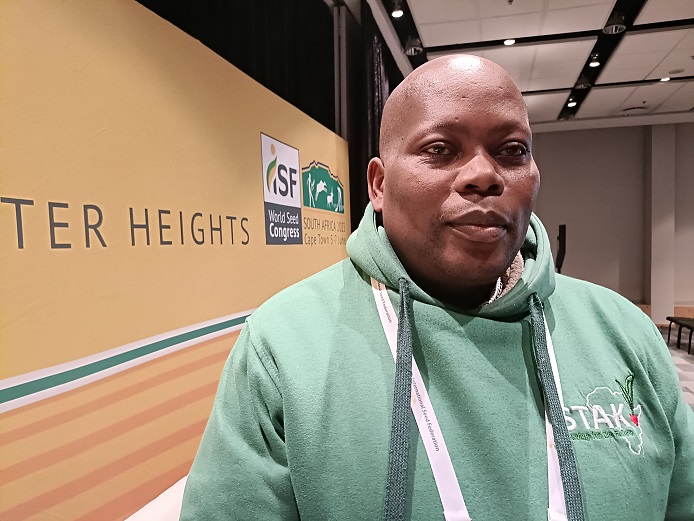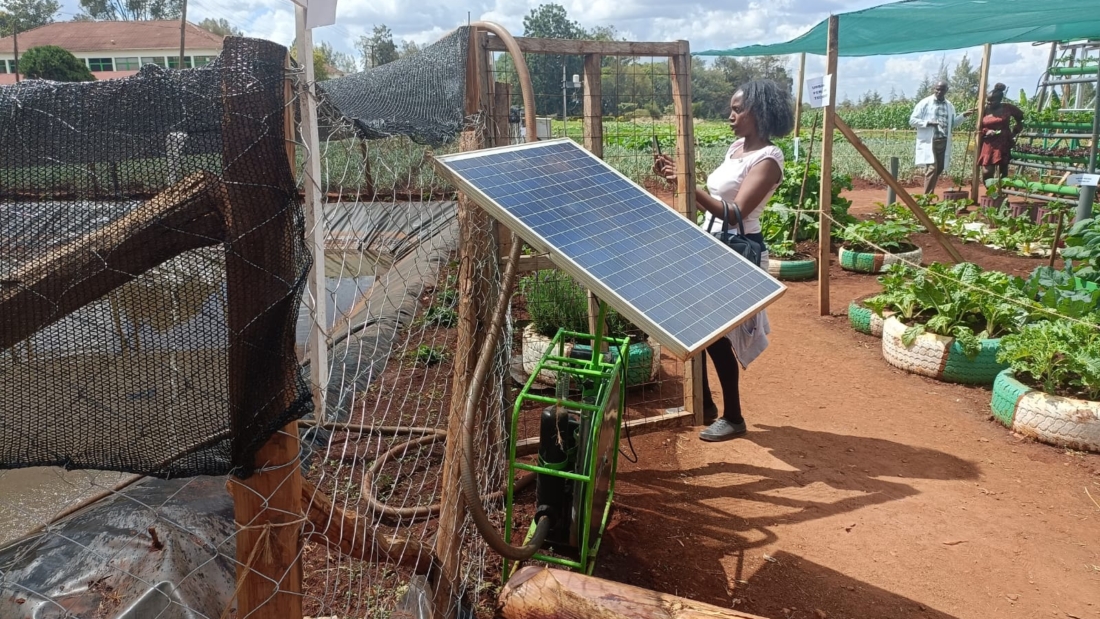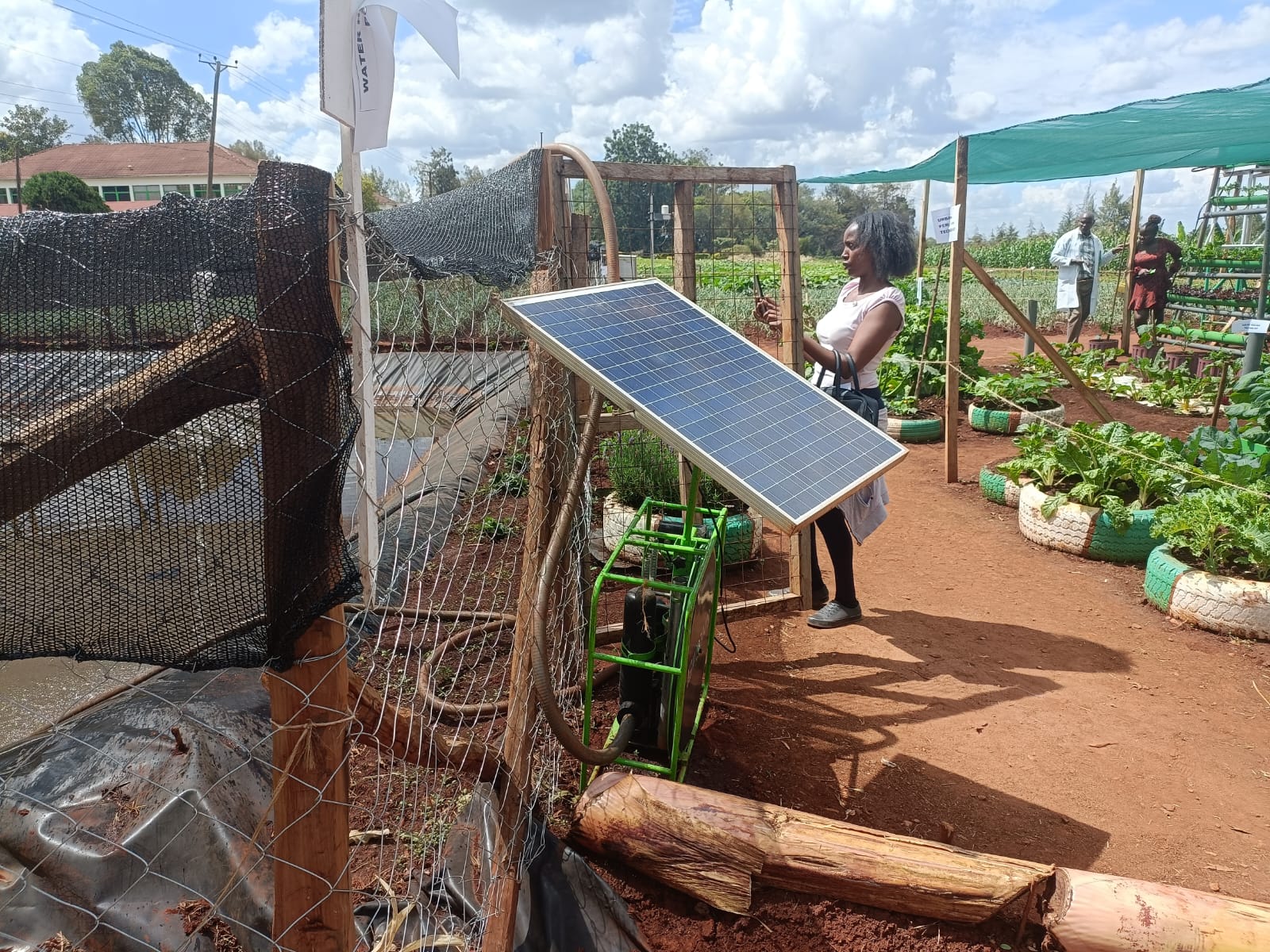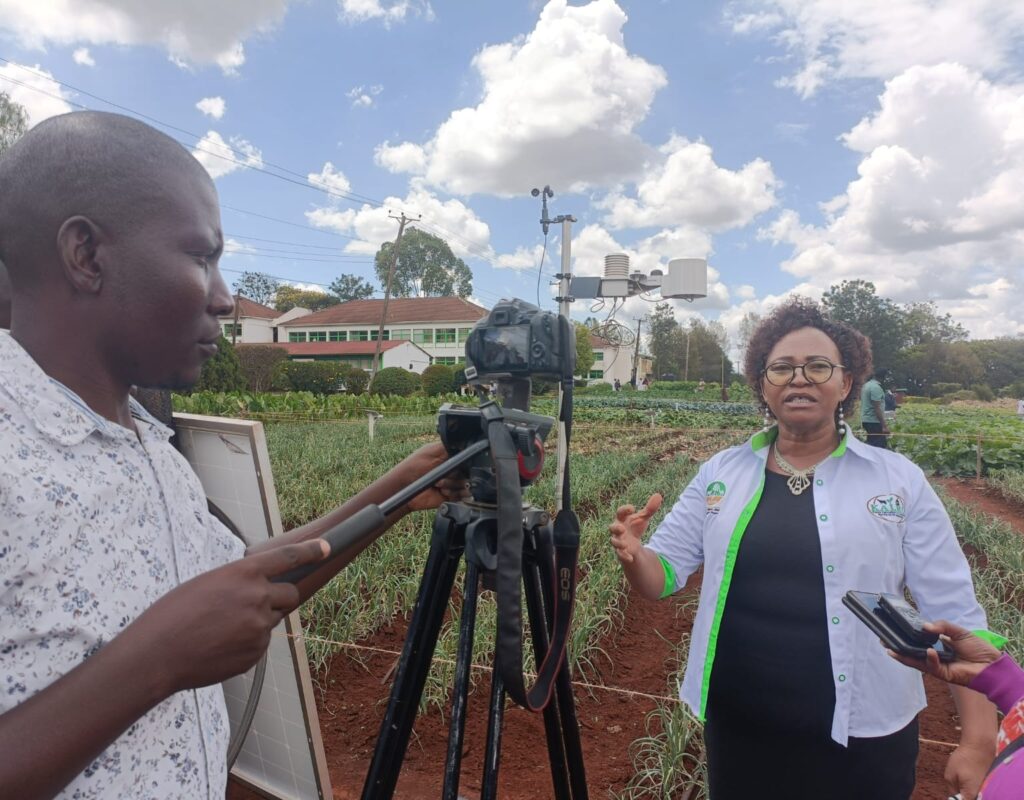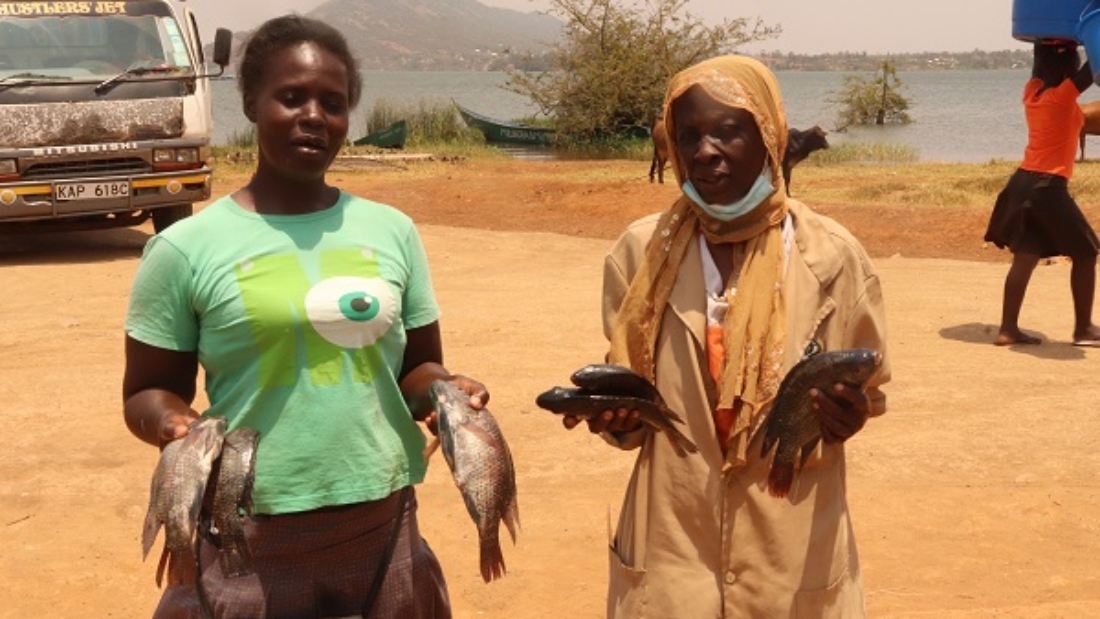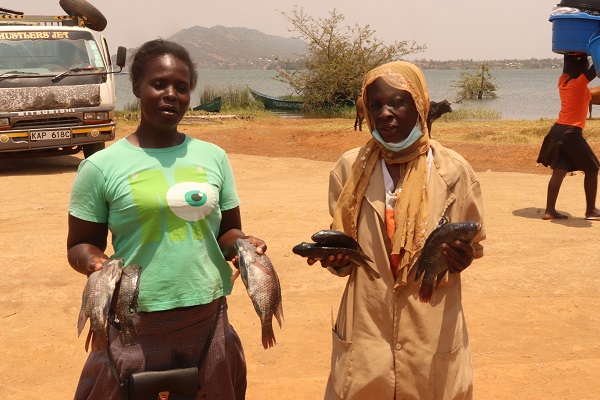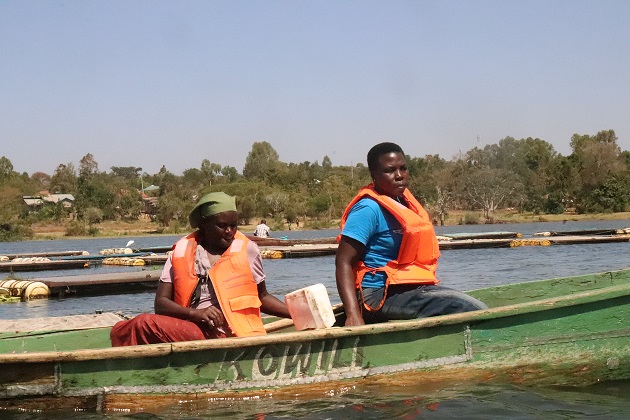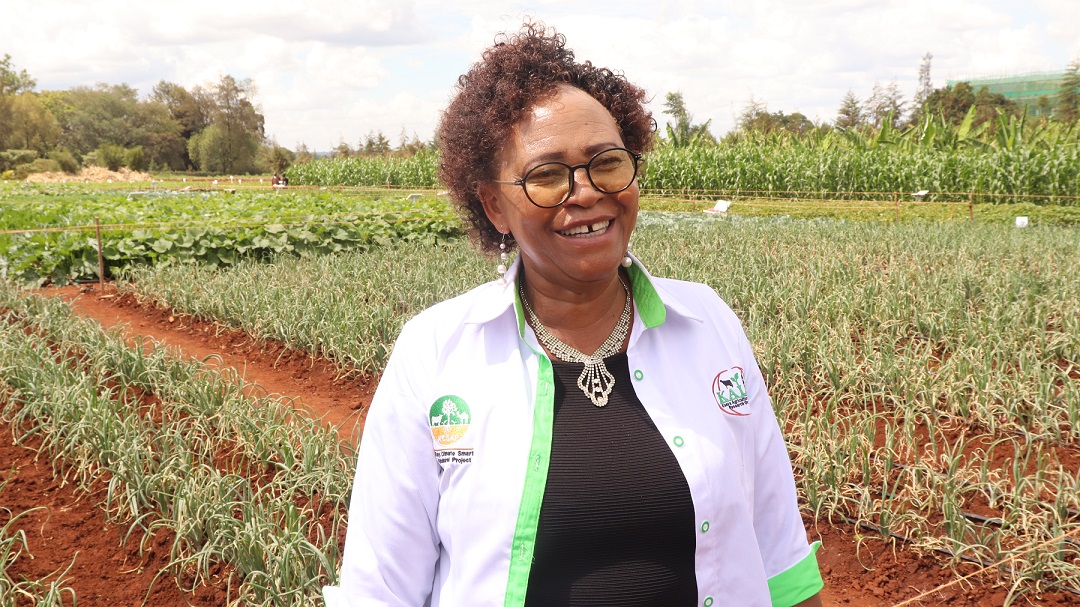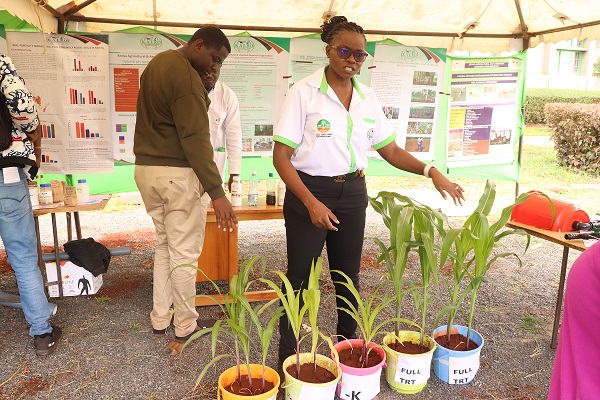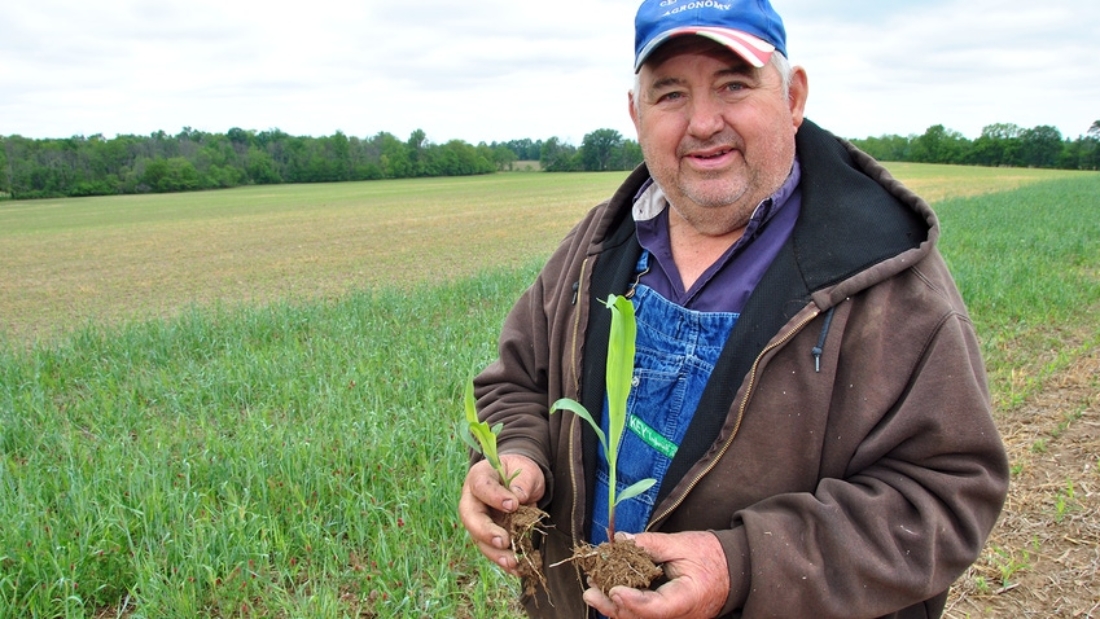Organic matter on steroids
Then I got to see what might best be described as the showpiece of the place: a field that had been no tilled since 1970 when Brandt first started tinkering with the practice. The soil was dark, with a certain ‘give’ under the shoe; a bit spongy, yet well drained. Nearby was a recently purchased field that had been conventionally planted for years.
The two fields were stunningly different from each other.
“My field has 7% organic matter,” he explained. “The field we just purchased here has less than 1%– it’s been farmed to death. Our goal is to get that figure up to 7% in the next seven years.”
Now, any farmer who paid attention in agronomy class can tell you there’s a bit of magic that happens to soils that make even the three or four percent OM level. Lots of nutrients get unlocked and fertilizer bills go down, while yields grow.
But… 7%?
Brandt would never brag about such an achievement, but he would certainly want others to see just what they could do to improve their farm’s soil health. He told me everything he had learned about farming came from these home-grown field trials he would set up each year.
“The average farmer might see what I’m doing and say, you don’t have scientific data,” he said. “If it works, who cares? I make a lot of mistakes, but this is how I learn. There’s nothing I won’t try.”
In fact, Brandt turned one of his ‘mistakes’ into another test plot. He ran out of weed spray on a small patch of land where he had been killing cover crops. So he just decided to see if the corn crop could outgrow the living cover blend. When I visited in late May of that year, the corn seedlings were healthier than the corn plants in the nearby area where the cover had been killed off.
“Who knows, maybe corn needs competition,” Brandt said with a smile.
Cover crop master
Brandt used to be famous in the cover crop world for his fondness for tillage radishes. He had been quoted many times on the marvels of this plant builds soil tilth and opens up pores to improve drainage.

FULL OF LIFE: Brandt liked to plant tillage radishes in cover crops. Those radishes would break down and provide food for earthworms, which in turn built up the water infiltration capacity in the soil. Credit: Mike Wilson
At the time of our visit Brandt was selling no fewer than 127 varieties of cover crop seed. His warehouse could blend just about anything for anybody, depending on what you were trying to accomplish. One 12-variety blend had tall, medium and short plants, which offered a variety of root depth to suppress weeds and create pores in the soil. In the spring of 2015, he had planted corn into that blend and the soils tested 175 lb. of N per acre, so no nitrogen was needed on that field that year.
Brandt believed a three-crop rotation that includes corn, soy and wheat was the best way to build soil OM. Adding wheat is a hard sell at times since it’s not the revenue generator corn and soy are. However, you need to take the long view, he would insist.
“This wheat is going to probably make 90 bu. per acre,” he explained, gesturing to a nearby field. “Then after we harvest, we will put on a long season cover blend which will produce lots of N and bring P and K back to the surface. That will save me in the neighborhood of $200 per acre in reduced fertilizer costs when I plant corn in that field next spring.
“If you have a three-year rotational crop you can enhance corn and soybean yields; that is university proven,” he added. “Now we’re going to a three-crop rotation plus cover crops, which gives us higher OM, loosens soil, increases water infiltration and lowers nutrient costs the next two years. That makes it all more profitable, and no one can argue with that.”
Here’s something else no one can argue with: Dave Brandt will be sorely missed.


